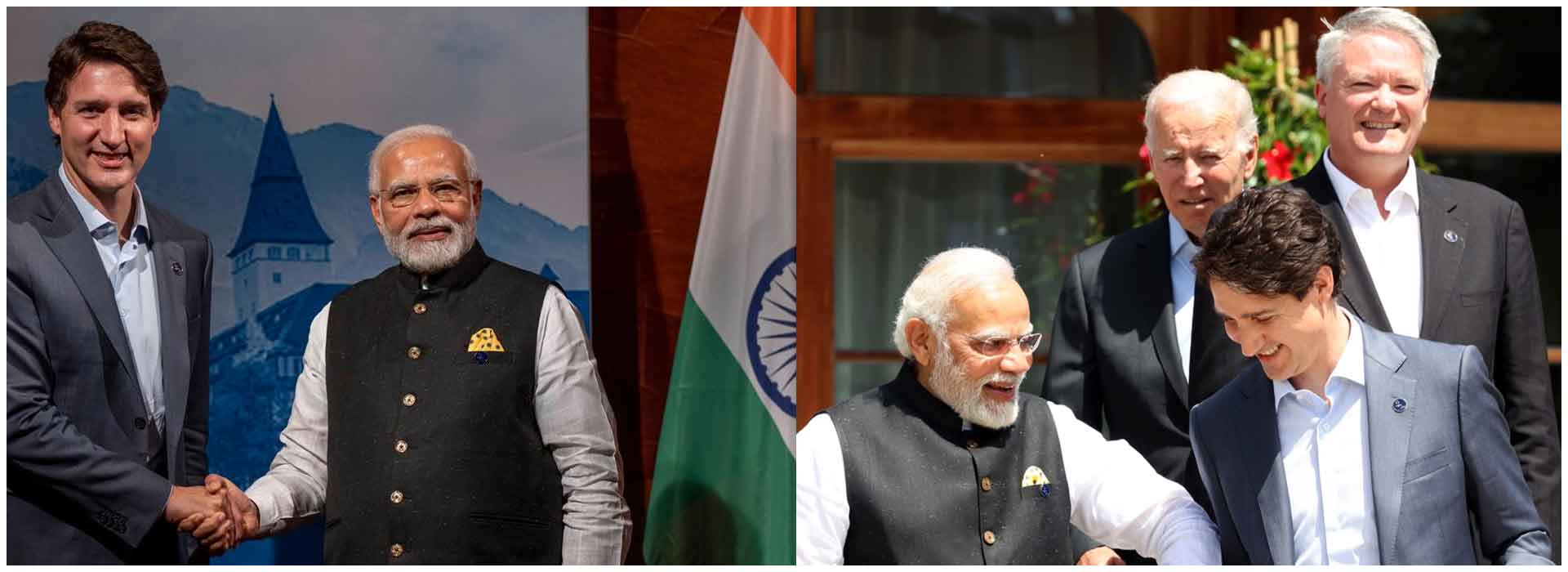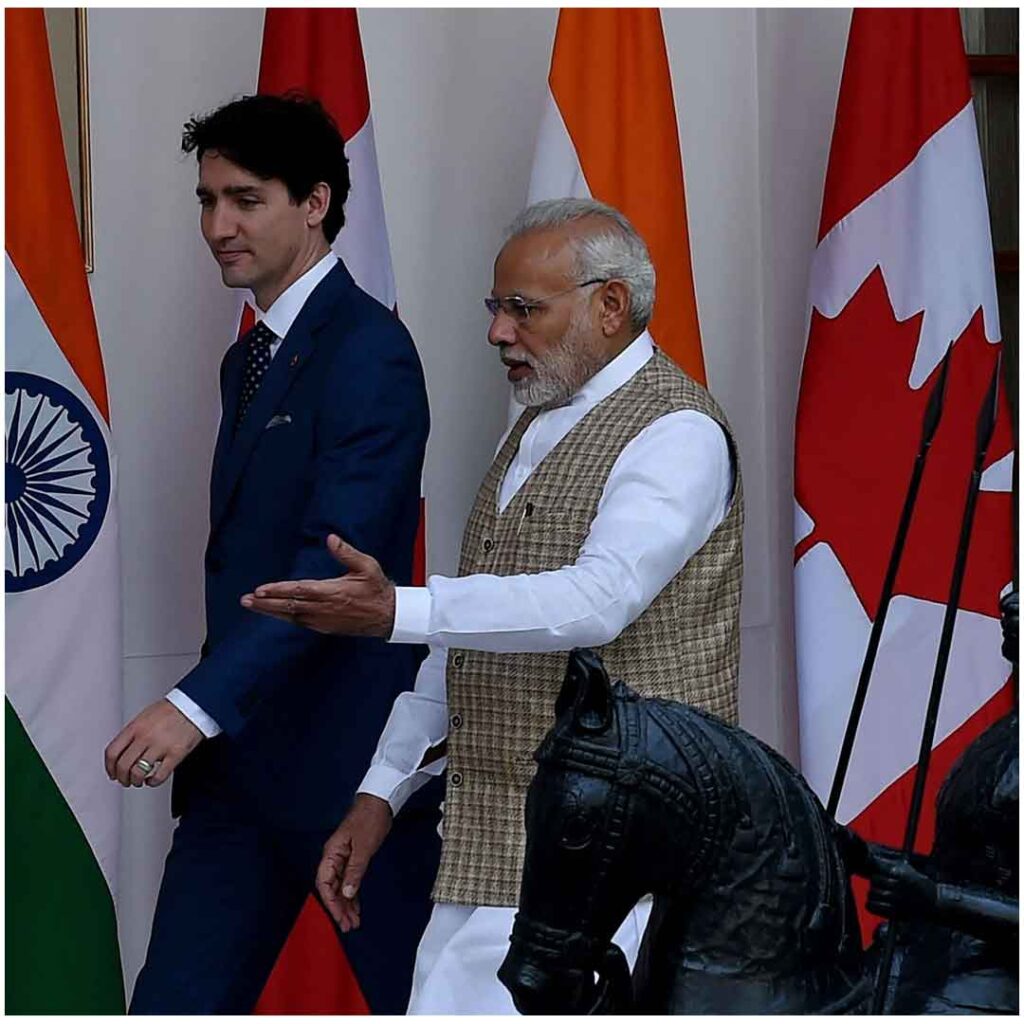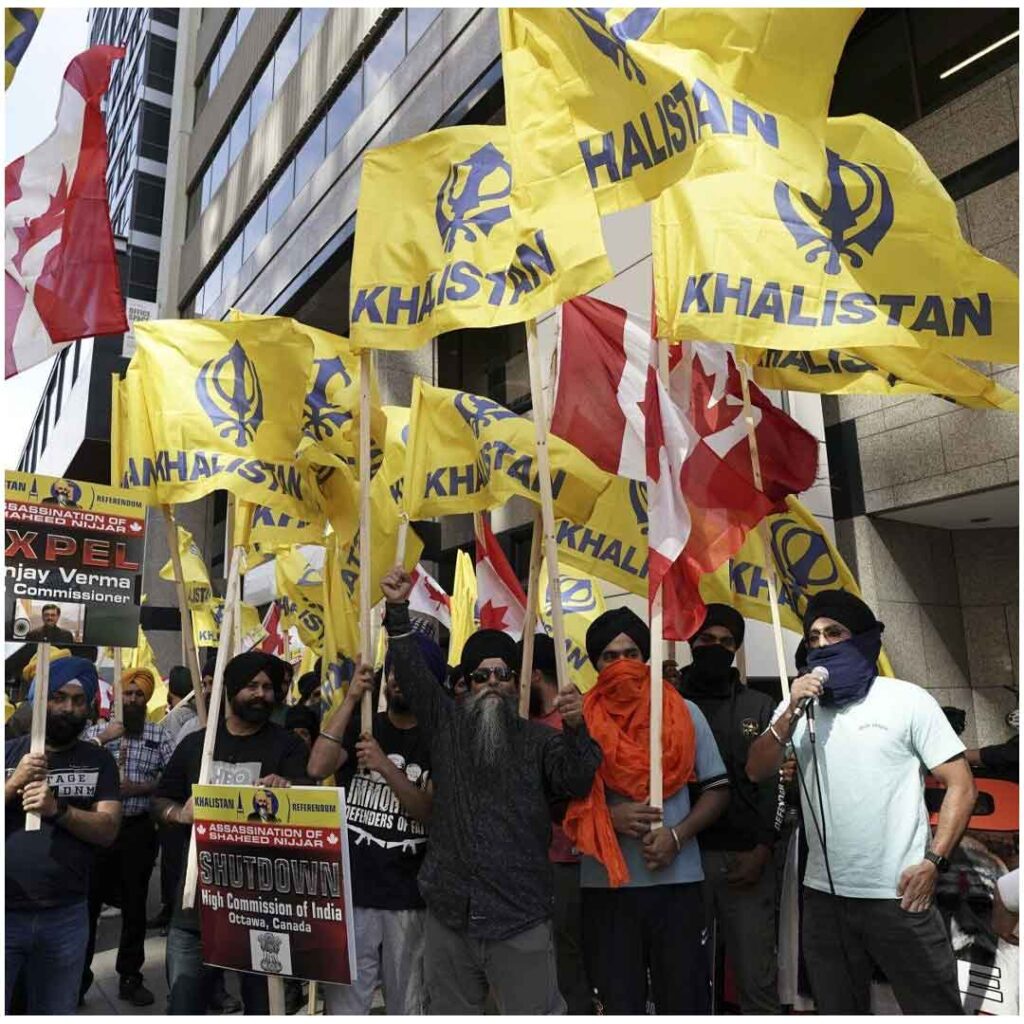US and Canada unite over concerns, India dismisses accusations of Khalistan separatist plot

In recent months, tensions between Canada and India have escalated, centered on allegations concerning the Khalistan separatist movement. This movement, which advocates for a separate Sikh state in the Punjab region of India, has long been a contentious issue. While the United States and Canada have historically shared a close relationship as allies, their concerns over this issue have drawn significant attention on the global stage. At the same time, India has strongly denied accusations, rejecting any claims that link it to separatist actions or allegations of interference.
The dispute raises questions not only about the future of diplomatic relations between these countries but also about the broader implications for international politics, sovereignty, and the rights of minority groups. To understand the present situation, it is crucial to explore the background of the Khalistan movement, the recent events that reignited tensions, and the potential consequences for all parties involved.
A Historical Look at the Khalistan Movement
The Khalistan movement is rooted in grievances dating back decades, primarily focused on the demand for greater religious and political autonomy for Sikhs in India. The movement gained significant momentum in the 1980s, culminating in violent clashes between separatist factions and Indian authorities. One of the most notable events in this chapter of history was Operation Blue Star in 1984, where the Indian government launched a military operation to remove militants from the Golden Temple, a sacred site for Sikhs in Amritsar, Punjab. This operation, and the violence that followed, left deep scars within the Sikh community, both in India and across the global Sikh diaspora.

While the movement has since lost much of its momentum within India, pockets of support remain, particularly among Sikh communities living abroad. Canada, which has one of the largest Sikh populations outside India, has become a focal point for this issue. In particular, certain groups within Canada’s Sikh diaspora have been accused by Indian authorities of financially and ideologically supporting the Khalistan cause, accusations that the Canadian government has not officially endorsed.
Canada’s Sikh Community and Political Influence
Canada is home to a vibrant and politically active Sikh community, many of whom immigrated to the country during the 20th century. Over time, Sikhs in Canada have made significant contributions to the nation’s cultural and economic landscape. In recent years, the community has also gained notable political influence, with several Sikh politicians holding prominent positions at both the provincial and federal levels.
This growing influence, however, has sometimes led to tensions between Canada and India. Indian authorities have raised concerns about some elements within Canada’s Sikh community allegedly supporting the Khalistan movement. At the heart of the issue is Canada’s strong commitment to upholding the democratic rights of its citizens, including freedom of speech and the right to peaceful assembly. Canadian officials argue that while they do not support any separatist agenda, they must protect the rights of their citizens to express their views—even if those views are controversial.
The Diplomatic Fallout in 2023
The diplomatic tensions between Canada and India reached new heights in September 2023, following the killing of a prominent Sikh leader in British Columbia. Canadian Prime Minister Justin Trudeau raised concerns about potential Indian involvement in the assassination, prompting a sharp denial from the Indian government. India dismissed the accusations as baseless and politically motivated, further complicating the diplomatic relationship between the two nations.
The fallout from this event had immediate repercussions, with both countries expelling diplomats and engaging in a war of words on the international stage. While neither side has shown any signs of backing down, the situation has created a diplomatic standoff that has yet to be resolved.
The Role of the United States
Caught in the middle of this dispute is the United States, which shares strong relationships with both India and Canada. As a close ally of both nations, the U.S. has found itself in a delicate position, attempting to balance its interests in maintaining stable ties with both countries while also addressing concerns over regional stability and potential human rights violations.
Washington has thus far maintained a cautious and neutral stance on the issue. While the U.S. government has expressed concerns about the potential for instability, it has avoided directly siding with either party in the conflict. Instead, the U.S. has called for calm and encouraged dialogue as the primary means of resolving the differences between Canada and India. By emphasizing the importance of peaceful negotiation and diplomacy, the U.S. hopes to prevent the situation from escalating further.
India’s Perspective on Sovereignty and Security
From India’s perspective, any form of foreign support for the Khalistan movement is seen as a direct threat to its sovereignty and territorial integrity. Indian officials argue that the separatist movement, though weakened over the years, still poses a danger to national unity. As such, they have consistently urged countries like Canada to take a firmer stance against groups that promote or fund the Khalistan agenda.

For India, the issue goes beyond just the Sikh community. It’s about maintaining control over its borders, ensuring national security, and preserving the country’s territorial integrity. This is why India takes allegations of foreign interference, particularly in matters concerning separatism, very seriously. The Indian government has repeatedly called on other nations to crack down on what it sees as illegal activities and to prevent the spread of extremist ideologies that could fuel separatist movements within its borders.
The Path Forward: Diplomacy or Division?
As it stands, the ongoing tensions between India and Canada are unlikely to be resolved in the near future. Both nations have dug in their heels on their respective positions, with neither side showing a willingness to compromise. For Canada, protecting the rights of its citizens, including those who may support controversial causes like Khalistan, is a cornerstone of its democratic values. For India, defending its sovereignty and preventing the resurgence of separatist movements is paramount.
The United States’ role in this conflict will be critical in the coming months. As both Canada and India are strategic partners for the U.S., it will need to walk a fine line in managing its relationships with both countries. At the same time, Washington’s influence as a global leader may be instrumental in bringing the two sides to the negotiating table.
Conclusion
The situation serves as a reminder of the complexities of modern diplomacy. In an interconnected world, issues of sovereignty, minority rights, and international relations are often intertwined in ways that can lead to unexpected conflicts. As Canada, India, and the U.S. navigate these challenges, the path forward will likely require patience, compromise, and a renewed commitment to diplomatic engagement.
Click to read the full article





